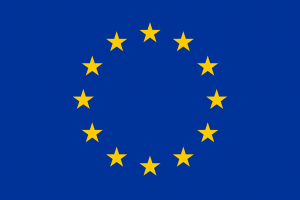Who Run the World?

Organisers
Poland’s Minister for Equality, Ms. Katarzyna Kotula
European Commissioner for Equality, Preparedness and Crisis Management,
Ms. Hadja Lahbib
with the support of the Polish Presidency of the Council of the EU, the Polish Mission to the UN, and the EU Delegation to the UN
Introduction
At the 69th session of the Commission on the Status of Women (CSW), we take time to reflect on the past and future of women and girls in all their diversity. Today, young women and girls are at the forefront of the fight for human rights, social justice, climate action and a just green and digital transition for all. They bring bold, fresh, and courageous ideas and voices to the global challenges we face.
Young women and girls are reshaping the landscape of activism by making their movements both global and intersectional. As highlighted in Plan International's recent report, "Strengthening Girls' Rights as Human Rights", this approach is crucial for recognizing the diverse realities of girls, particularly those from marginalized groups - such as girls with disabilities, indigenous girls, and those affected by conflict. The empowerment of these girls, who face the greatest barriers, must be central to the work we do.
Addressing current challenges, especially in the context of gender equality, requires a strong, unified, intersectional response from all actors in public life - governments, public and private institutions, and civil society. Plan International’s report underscores this, emphasizing the importance of recognizing the complexity of girls' experiences and needs. While the visibility of girls in the discourse around women’s and children’s rights is slowly growing, it remains insufficient. Too often, girls are invisible in the conversation, lost between the categories of „women” and „children.”
Despite their immense contributions, girls remain one of the most invisible and discriminated groups, often overlooked in the broader discourse on gender equality. Globally, girls continue to face barriers to education and healthcare, including sexual and reproductive health and rights. They are also frequent victims of hate speech, bullying - especially online - and sexual and gender-based violence.
These challenges are compounded by shrinking civil spaces, the rise of fundamentalism, anti-gender coalitions, armed conflict, and environmental disasters. It is within this challenging landscape that girls take the lead in paving their path to empowerment and a better, more equal world for all.
We understand girls’ activism as efforts to promote, impede, direct or intervene in social, political, economic or environmental reform with the desire to make changes in society toward a perceived common good.
From stopping child marriage and fighting for their right for education to taking action on the climate crisis, girls and young women are taking bold steps to create a better future for themselves and future generations. Nujood Ali (Yemen), at the age of 10, became one of the youngest girls to successfully seek a divorce and fight against child marriage, inspiring other girls in similar situations to stand up for their rights. Vanessa Nakate (Uganda), a climate activist, has been advocating for climate justice, emphasizing the disproportionate impact of the climate crisis on African communities, and amplifying the voices of African young persons and women in climate discussions.
Adopted on 15 September 1995, the Beijing Declaration and Platform for Action outlines twelve critical areas for advancing gender equality, including the girl-child. In parallel, the situation of girls is addressed in both the Convention on the Elimination of All Forms of Discrimination against Women and the Convention on the Rights of the Child. At EU level, the EU Gender Equality Strategy 2020-2025, the EU Action Plan for Gender Equality and Women's Empowerment in External Action 2021–2027 and the EU Rights of the Child Strategy include actions for girls and young women.
For young women’s and girls’ activism to truly thrive, they must be empowered and supported. Their efforts need more than recognition - they must be encouraged, celebrated, and amplified. The question remains how both public and private sector decision-makers can better support the activism of girls and young women, to ensure their voices are heard. What concrete actions can be taken to support their leadership? How can we elevate and amplify the work of girls and young women, scaling up successful practices and solutions to inspire widespread change? And finally, how to create a safe public space - both online and offline - for all, and protect them from the discrimination they often face in activism and public spaces?
This side-event aims to bring together the diverse experiences of girls and young women engaged in activism, unflinchingly addressing the structural barriers they encounter in reclaiming their space in the public sphere.
Objectives and sub-goals
The side event will focus on how to empower young women and girls in their activism and give them safe access to the public space, particularly in the context of modern challenges to gender equality and their role in global human rights discussions. It will also emphasize the importance of viewing activism as an umbrella concept, encompassing a wide range of activities and processes.
The main objectives are to:
-
Showcase good practices and experiences from public and private actors including girls and young women themselves, while taking into account the diversity of girls and the unique challenges they face,
-
Explore and discuss strategies to strengthen the rights and protection of young women and girls activists globally, and integrate their needs into systemic actions and solutions.
Target audience
The side event is targeted at government representatives, policymakers, international organizations, civil society groups, social partners, academics and researchers, private sector representatives, grassroots organizations, and community leaders -especially those working on the rights of women and girls. It particularly welcomes the participation of girls and young women. Their voices are central to the debate.
Programme
A detailed agenda with speakers will follow.
PRACTICAL INFORMATION
OVERVIEW
Advance registration required.
